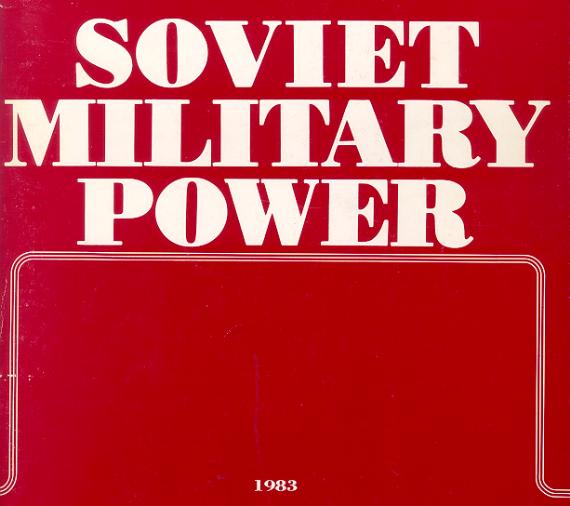Chapter II - Strategic Forces
Soviet leaders since Khrushchev's time have followed a consistent policy for nuclear development. Their main objective is to capitalize, in peacetime, on the coercive leverage inherent in powerful nuclear forces, to induce paralysis and create disarray in the free societies. In wartime, they regard employment of those forces as the key to their survival and winning.
The Soviet policy calls for forces which are designed to destroy Western nuclear forces on the ground and in flight to their targets, and for the capacity to survive should nuclear weapons reach the Soviet homeland. The overall missions encompass the likelihood that intercontinental nuclear war would evolve from a general East-West conflict across the face of Eurasia. These missions are: protect the homeland, support the land war in Eurasia and eliminate the United States' capability to conduct or support warfare beyond its own shores.
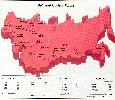 Protection
of the homeland is the most difficult mission. The strengths and
weaknesses of Western forces determine the tasks of the offensive and
defensive forces assigned to it. Hence, it is closely linked to Western
weapons development programs. Because of this, the Soviets attach great
importance to working hard to keep Western modernization programs to a
minimum during peacetime.
Protection
of the homeland is the most difficult mission. The strengths and
weaknesses of Western forces determine the tasks of the offensive and
defensive forces assigned to it. Hence, it is closely linked to Western
weapons development programs. Because of this, the Soviets attach great
importance to working hard to keep Western modernization programs to a
minimum during peacetime.
Protection of the homeland in a nuclear war would involve:
- disruption and destruction of the enemy's nuclear-associated command,control and communications,
- destruction or neutralization of as many of the West's nuclear weapons as possible on the ground or at sea before they can be launched,
- interception and destruction of surviving weapons - aircraft and missiles before they can reach targets,
- protection of the party, state, and industrial infrastructure and the essential working population against those weapons that reach their targets. The forces and programs in place or under active development designed to accomplish these tasks include:
- hard-target-capable ICBMs and LRINF missiles,
- bombers capable of penetrating US defensive systems and SLBMs which can be postured for short flight times,
- antisubmarine forces capable of attacking US SSBNs,
- air and missile defenses, including early warning satellites and radars, interceptor aircraft, surface-to-air missiles, ABM radars and interceptors, and some anti-aircraft artillery,
- passive defense forces, including civil defense forces, and troops and equipment devoted to confusing incoming aircraft,
- hardened facilities numbering in the thousands, command vehicles, and evacuation plans designed to protect party, military, governmental, and industrial staffs, essential workers and, to the extent possible, the general population. Supporting a land war in Eurasia and eliminating the United States' capability to fight beyond its own shores require a capability to employ intercontinental forces useful over a variety of ranges and the destruction of:
- other military-associated command and control,
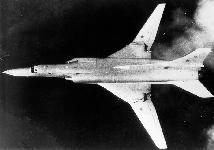 - war-supporting industries, arsenals and major military facilities,
- war-supporting industries, arsenals and major military facilities,
- ports and airfields in the United States and those along sea and air routes to European and Asian theaters of war, and
- satellite and ground-based surveillance sensors and facilities and communications. Offensive forces (ICBMs, LRINF, SLBMs, and bombers) and antisatellite weapons are generally assigned these tasks although some special operations troops could be used, especially in Eurasia. These tasks are generally less demanding than those for the first mission.
Soviet intercontinental forces are designed to fulfill their missions under the best and worst of circumstances. In the Soviet view, the most favorable circumstance is a first or preemptive strike; the least favorable is a follow-on strike after nuclear weapons have hit the USSR. In between is the launch-under-attack circumstance: that is, executing offensive forces after weapons aimed at the USSR have been launched but before they hit their targets. The Soviets have under each of these circumstances. Moreover, the Soviets appear to believe that nuclear war might last for weeks, even months, and have factored this into their force development.
- In a first or preemptive strike, the essentials are effective coordination of the strike and sound intelligence of the West's intentions. Soviet nuclear forces practice almost constantly, emphasizing command and control under various conditions. During wartime, the main mission of Soviet intelligence is to determine the West's nuclear attack intentions.
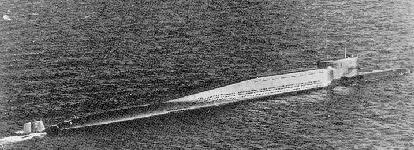 -
The Soviets practice launching weapons
under the stringent time constraints that would prevail under
hypothetical launch-under-attack circumstances. They have established a
satellite-based ICBM launch detection system, have built an
over-the-horizon radar missile launch detection system to back up the
satellites, and have large phased-array radars ringing the USSR.
-
The Soviets practice launching weapons
under the stringent time constraints that would prevail under
hypothetical launch-under-attack circumstances. They have established a
satellite-based ICBM launch detection system, have built an
over-the-horizon radar missile launch detection system to back up the
satellites, and have large phased-array radars ringing the USSR.
- Follow-on strikes stress the survivability of the command, control and communications systems and that of the weapons themselves. The Soviets have invested heavily in providing this survivability. The SS-17, SS-18, and SS-19 ICBMs are housed in the world's hardest silos. Silo deployment has been adopted for ABMs as well. The SS-20 LRINF missile is mobile, and a mobile strategic SAM is being developed. The launch control facilities for offensive missiles are housed in very hard silos or on off-road vehicles. Communications are redundant and hardened. Higher commands have multiple hardened facilities and mobile command vehicles and aircraft available for their use. Bombers have alert procedures and dispersal airfields. Ballistic missile submarines can be placed in tunnels near their home ports, submerged in deep fjords just off their piers, dispersed and protected by Soviet surface and submarine forces.
- The Soviet belief that war might be protracted requires the survivability needed for follow-on strikes, along with war reserves, protection for people and equipment, and the capacity to reload launchers. For their ICBM, LRINF and air defense forces, the Soviets have stocked extra missiles, propellants, and warheads throughout the USSR. ICBM silo launchers can be reloaded in a matter of days, and provision has been made for the decontamination of those launchers. Plans for the survival of necessary equipment and personnel have been developed and practiced. Resupply ships are available to reload Soviet SSBNs in protected waters. Despite these comprehensive warfighting objectives and ambitious development and deployment programs over the years, the Soviets are continuing to modernize all aspects of their strategic forces. Much of what the Soviets have done since September 1981 involves the consummation of programs begun in the 1970s and offers the first signs of new programs designed to help remedy weaknesses still remaining and to allow them to attain their own objectives in the face of prospective Western programs.
Older programs:
- replacement of older missiles with SS-19 Mod 3 and SS-18 Mod 4 MIRVed ICBMs, the world's most lethal ICBMs,
- construction of DELTA III SSBNs, fitted with 16 SS-N-18 MIRVed SLBMs, with YANKEE and HOTEL SSBNs dismantled in compensation,
- continuation of the SS-NX-20 MIRVed SLBM testing program (The TYPHOON/SS-NX-20 weapon system will become operational in 1983.),
- continued production of BACKFIRE bombers,
- further deployment of the SA-10 low altitude SAM around Moscow and throughout the USSR,
- initial production of the Il-76/MAINSTAY airborne warning and control systems (AWACS),
- continued development of a high speed ABM interceptor and a modified version of the older GALOSH ABM interceptor,
- additional construction of large phased-array radars around the periphery of the USSR,
- continued construction of hardened shelters and command posts for passive defense.
New programs since 1981:
- first tests of a new solid-propellant ICBM similar in size and payload to the US MX,
- the first test of a new small solid propellant ICBM, which could be deployed on mobile transporters,
- preparations to begin testing other new ICBMs, probably in 1983,
- development of a series of long-range cruise missiles intended for ground, air and sea launch platforms,
- preparations to begin testing another new SLBM, probably in 1983,
- the first flight tests of the new BLACKJACK strategic bomber,
- new ABM deployment around Moscow to include a new, very large phased array radar and deployment of new ABM interceptors,
- testing of high-energy laser systems for land-based and sea-based air defense,
- Testing of a mobile version of the SA-10 SAM, the initial deployment of the FOXHOUND interceptor which can track targets flying far beneath it and fire air-to-air missiles against those targets,
- testing of two additional new air defense interceptor aircraft.
While these efforts have continued, the Soviet leadership has also been directing an active measures campaign to support and amplify ongoing anti-nuclear movements in the West, in order to influence, delay, or frustrate Western nuclear program developments. Using this two-pronged approach, Moscow seeks a new gain in relative capability despite the drive of Western governments to redress the imbalance which has developed over the past decade.
INTERCONTINENTAL ATTACK
 Since
the late 1950s, the Soviets have developed and deployed nuclear attack
forces having two fundamental capabilities: strikes against enemy
nuclear arsenals and control systems and support of land warfare in
Eurasia. While the character, composition, and technical sophistication
of the forces have
changed over the years, the missions have not. The development of
capabilities to satisfy the missions has been done with patience and
purpose derived from a realization that not all goals can be achieved
at once. ICBMs have the mission to attack the ICBM force of the United
States and other hardened targets. ICBMs and SLBMs are earmarked for
strikes against communications, command and control systems and against
the defense infrastructure of the United States. Some ICBMs and SLBMs
may have been designated as strategic reserves. All of the forces must
operate in a variety of environments. Bombers have become a
supplementary force for ICBMs and SLBMs. Finally, the majority of the
systems have been designed to be capable for use not only at
intercontinental ranges against the United States but also at shorter
ranges against targets throughout Europe and Asia.
Since
the late 1950s, the Soviets have developed and deployed nuclear attack
forces having two fundamental capabilities: strikes against enemy
nuclear arsenals and control systems and support of land warfare in
Eurasia. While the character, composition, and technical sophistication
of the forces have
changed over the years, the missions have not. The development of
capabilities to satisfy the missions has been done with patience and
purpose derived from a realization that not all goals can be achieved
at once. ICBMs have the mission to attack the ICBM force of the United
States and other hardened targets. ICBMs and SLBMs are earmarked for
strikes against communications, command and control systems and against
the defense infrastructure of the United States. Some ICBMs and SLBMs
may have been designated as strategic reserves. All of the forces must
operate in a variety of environments. Bombers have become a
supplementary force for ICBMs and SLBMs. Finally, the majority of the
systems have been designed to be capable for use not only at
intercontinental ranges against the United States but also at shorter
ranges against targets throughout Europe and Asia.
ICBMS: The Soviet ICBM force has been developed and deployed in four successive generations, each representing significant advances. The Soviet ICBM force currently consists of 550 SS-11s, 60 SS-13s, 150 SS-17s, SS-18s, and 330 SS-19s. These missiles carry some 6,000 nuclear warheads. Presently, the great majority of the 17s, 18s and 19s are equipped with MIRVs. By the mid-1980s the Soviets are expected to complete their current ICBM modernization programs for fourth-generation systems. At that time, they will have 520 SS-11s,60 SS-13s, 150 SS-17s, 308 SS-18s, and 360 SS-19s. When this deployment is finished, the force will have some 6,400 warheads.
ICBM improvements may be measured in terms of quantity, quality and survivability.
Quantitative Improvements: Deployment of the Soviets' first (SS-6) and second (SS-7 and SS-8) generation ICBMs began in the late 1950s and early 1960s. By 1966, deployment of third generation missiles (SS-9, SS-11, and SS-13) was underway. With this generation, the Soviets rapidly increased the number of ICBMs deployed. ICBM deployment reached its peak in themid-1970s at approximately 1,600 launchers. After this, the number of launchers gradually decreased to the current level of approximately 1,400 as the Soviets removed their less-capable second generation missiles from the force. (The first generation was phased out in the 1960s.) From 1975 to the present, however, there has been a dramatic increase in the number of deliverable nuclear warheads as the MIRVed versions of the fourth generation ICBMs (SS-17,SS-18, and SS-19) have been deployed. Since these missiles can carry up to 10 reentry vehicles(RVs), the number of deployed ICBM nuclear warheads has increased by a factor of four, notwithstanding the reduction in the number of SALT-accountable launchers.
 Qualitative Improvements: The
dramatic growth in nuclear warheads observed after 1975 could not have
been possible without major qualitative improvements. The first two
generations of Soviet ICBMs were inaccurate, carried relatively small
payloads and required lengthy launch procedures. To make up for these
deficiencies, reentry vehicles were fitted with high-yield nuclear
weapons. With the third generation, both accuracy and payload
capability were improved to some degree. However, it was not until the
fourth generation that the technology became available to the Soviets
allowing greater throwweight and greatly improved accuracy so that
high-yield MIRVs could be carried by operational missiles. The most
accurate versions of the SS-18 and SS-19are capable of destroying hard
targets. Together, these systems have the capability to destroy most of
the 1,000 US MINUTEMAN ICBMs, using only a portion of the warheads
available. The Soviets follow an incremental improvement policy in the
development of their forces. They improve those components of a weapon
system that need improving and retain those portions that are
satisfactory. In this manner, they have greatly improved the
reliability and capability of their current ICBM force.
Qualitative Improvements: The
dramatic growth in nuclear warheads observed after 1975 could not have
been possible without major qualitative improvements. The first two
generations of Soviet ICBMs were inaccurate, carried relatively small
payloads and required lengthy launch procedures. To make up for these
deficiencies, reentry vehicles were fitted with high-yield nuclear
weapons. With the third generation, both accuracy and payload
capability were improved to some degree. However, it was not until the
fourth generation that the technology became available to the Soviets
allowing greater throwweight and greatly improved accuracy so that
high-yield MIRVs could be carried by operational missiles. The most
accurate versions of the SS-18 and SS-19are capable of destroying hard
targets. Together, these systems have the capability to destroy most of
the 1,000 US MINUTEMAN ICBMs, using only a portion of the warheads
available. The Soviets follow an incremental improvement policy in the
development of their forces. They improve those components of a weapon
system that need improving and retain those portions that are
satisfactory. In this manner, they have greatly improved the
reliability and capability of their current ICBM force.
Survivability Improvements: One of the most important improvements made in the ICBM force has been in the area of survivability. Most of the first- and second-generation ICBMs were deployed on above-ground launchers with no real protection for the launcher or the missile.During the deployment of the second-generation missiles the Soviets began to deploy missiles at sites containing three underground silo launchers. Third-generation missiles were deployed in hardened, underground, single-silo sites. By using hardened and widely-dispersed launchers the Soviets increased the ICBM force survivability. The fourth-generation ICBMs were placed in launchers that, for the most part, had been converted from third-generation silos. In the process of conversion, the hardness of the launchers was considerably increased to improve missile and launcher survivability, upgraded communications facilities were added, and silo-based launch control facilities were built. The Soviets have also undertaken several programs to modernize and upgrade launchers for their third-generation ICBMs. The result is that the current Soviet ICBM force is vastly more survivable than was the case a decade ago.
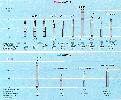 ICBM Reload Capability: The
Soviets have contingency plans for reloading and refiring ICBMs from
launchers that already have been used to fire an initial round. The
cold-launch technique employed by the SS-17 and SS-18 lends itself to
such a reload capability. Additionally, all currently deployed
liquid-propellant ICBMs - SS-ll, SS-17, SS-18 and SS-19 - are contained
in a launch canister within the silo. This and the silo design minimize
damage to the launcher during the initial firing and give the Soviets
the capability to reload each of these launchers. The Soviets probably
cannot refurbish and reload silo launchers in a period less than a few
days; nevertheless, they believe that this capability is of significant
value because
they anticipate that a nuclear war might be protracted. The Soviets
have made provisions for the delivery of reserve missiles, warheads and
propellants to ICBM complexes for reload purposes. None of these extra
missiles or warheads are counted under SALT agreements. Only the
launchers are counted.
ICBM Reload Capability: The
Soviets have contingency plans for reloading and refiring ICBMs from
launchers that already have been used to fire an initial round. The
cold-launch technique employed by the SS-17 and SS-18 lends itself to
such a reload capability. Additionally, all currently deployed
liquid-propellant ICBMs - SS-ll, SS-17, SS-18 and SS-19 - are contained
in a launch canister within the silo. This and the silo design minimize
damage to the launcher during the initial firing and give the Soviets
the capability to reload each of these launchers. The Soviets probably
cannot refurbish and reload silo launchers in a period less than a few
days; nevertheless, they believe that this capability is of significant
value because
they anticipate that a nuclear war might be protracted. The Soviets
have made provisions for the delivery of reserve missiles, warheads and
propellants to ICBM complexes for reload purposes. None of these extra
missiles or warheads are counted under SALT agreements. Only the
launchers are counted.
New ICBMs Under Development: Soviet ICBMs will continue to emphasize the force improvements that have been observed since the early 1960s: accuracy, MIRVing, reliability, and survivability. Two new solid-propellant ICBMs are currently being developed. One of these is about the size of the US MX intended for silo deployment; the other is a smaller missile, which will probably be designed for deployment on mobile launchers similar to those used with the SS-20. Because of their capability for dispersal, mobile missiles are highly survivable. Furthermore, they have an inherent reload capability, which is also a significant force improvement. Testing programs for one or two additional ICBMs, probably based on the SS-18 and SS-19, are expected to begin in 1983.
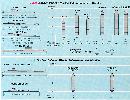 SSBNs/SLBMs: Over
the last two years the Soviets have continued to modernize their
submarine launched ballistic missile (SLBM)force. A second
TYPHOON-Class nuclear powered ballistic missile submarine (SSBN) has
been launched at the Severodvinsk Shipyard; the first TYPHOON completed
its sea trials and has moved to port facilities on the north coast of
the Kola Peninsula. Armed with 20 launchers for the MIRVed SS-NX-20
solid-fueled SLBM,the first submarine of this class will be fully
operational by the end of 1983. The range of the SS-NX-20, 8,300
kilometers, places all of NATO Europe, North America and Asia within
TYPHOON's reach.
SSBNs/SLBMs: Over
the last two years the Soviets have continued to modernize their
submarine launched ballistic missile (SLBM)force. A second
TYPHOON-Class nuclear powered ballistic missile submarine (SSBN) has
been launched at the Severodvinsk Shipyard; the first TYPHOON completed
its sea trials and has moved to port facilities on the north coast of
the Kola Peninsula. Armed with 20 launchers for the MIRVed SS-NX-20
solid-fueled SLBM,the first submarine of this class will be fully
operational by the end of 1983. The range of the SS-NX-20, 8,300
kilometers, places all of NATO Europe, North America and Asia within
TYPHOON's reach.
While the TYPHOON SSBN production program is still relatively new, the Soviets' earlier DELTA-III program is nearing completion. Thus far, 14 of these SSBNs have been launched; a few more will probably be built. Each carries 16 liquid-fueled MIRVed SS-N-18 SLBMs. Like the TYPHOON, the missiles on the DELTA-III, as well as the DELTA I and II, can reach targets in almost all of North America from home waters. By contrast, only the TRIDENT C-4 has similar range capabilities. How ever, the bulk of US SLBMs is much less capable in terms of range, accuracy and yield. Therefore, the quantitative US advantage shown in the chart below should not mislead.
With the addition of each new SSBN, the Soviet Navy has dismantled older submarines in order to remain within the number of launchers (950) and number of hulls (62) allowed under provisions of the SALT-I Agreement, as extended. The addition to the force of some 200 reentry vehicles (RVs) on each TYPHOON, however, greatly eclipses the temporary reduction caused by the dismantlement of one YANKEE-Class SSBN (48 RVs) and of two HOTEL-II Class SSBNs (6 RVs) in compensation for a newly constructed TYPHOON. The acquisition of each new SSBN equipped with SS-N-18/SS-NX-20 SLBMs not only introduces more RVs but also allows the Soviets greater flexibility in the use of their new submarines. Older SSBNs with shorter-ranged SLBMs have to conduct lengthy transits in order to come within range of targets in North America.
Future developments in Soviet SLBMs will most likely center on improved RV accuracy to complement their estimated large nuclear yields and on the fielding of solid-fueled SLBMs as replacements for older liquid-fueled versions. A new SLBM, possibly intended to replace the SSN-18, probably will begin testing in 1983.
Apart from its SLBMs, the Soviet Navy will soon be the recipient of a sea-launched cruise missile (SLCM) that is currently under development, the SS-NX-21. With an estimated maximum range on the order of 3,000 kilometers, its mission is primarily nuclear strike, and its size is compatible with submarine torpedo tubes.
Bombers: The manned bomber has relinquished primary responsibility for nuclear attack to missiles, but the Soviets still view it as a viable component of their nuclear forces. The manned bomber provides them flexibility and diversity in their nuclear attack forces not available with ballistic missiles. Moreover, the Soviets clearly are prepared to use bombers in a variety of roles, to include conventional strikes in the European and Asian theaters, antiship operations, reconnaissance and nuclear operations in a protracted conflict.
Continuing Soviet interest in the manned bomber is evidenced by the number of programs underway to upgrade the aging force, including the development of a new strategic bomber and long-range air-launched cruise missiles. Moreover, sweeping organizational changes in the command structure of the Soviet air forces are in part intended better to integrate bombers into all types of air operations.
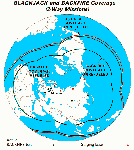 Deployment Trends: The current strategic
bomber force consists of almost 900 strike and
support aircraft. The overall size of the force
has remained relatively constant in recent years,
although modernization of the BACKFIRE and
upgrades in weapons have improved the quality. Three-fourths of the bombers are position
ed opposite NATO, while the remainder are
based along the Chinese border. BADGER,
BLINDER, and BACKFIRE make up the bulk
of the force and would carry out missions primarily against Europe and Asia. BEAR and
BISON could perform similar missions as well,
but are reserved mainly for strategic maritime
or intercontinental operations.
Deployment Trends: The current strategic
bomber force consists of almost 900 strike and
support aircraft. The overall size of the force
has remained relatively constant in recent years,
although modernization of the BACKFIRE and
upgrades in weapons have improved the quality. Three-fourths of the bombers are position
ed opposite NATO, while the remainder are
based along the Chinese border. BADGER,
BLINDER, and BACKFIRE make up the bulk
of the force and would carry out missions primarily against Europe and Asia. BEAR and
BISON could perform similar missions as well,
but are reserved mainly for strategic maritime
or intercontinental operations.
 Long-Range Bombers: The Tu-95/BEAR is
the primary intercontinental air threat to the
United States. Capable of delivering free-fall
bombs or air-to-surface missiles, under optimum conditions this aircraft can cover virtually
all US targets on a two-way mission. Introduced
in the mid-1950s, it is both the largest and
longest-range Soviet bomber currently operational. The range and flexibility of some models
can be further increased with mid-air refueling.
Six variants of the BEAR have been produced:
three for strike missions, two for reconnaissance, and one for antisubmarine warfare. The
antisubmarine warfare variant has continued in
production in 1982.
Long-Range Bombers: The Tu-95/BEAR is
the primary intercontinental air threat to the
United States. Capable of delivering free-fall
bombs or air-to-surface missiles, under optimum conditions this aircraft can cover virtually
all US targets on a two-way mission. Introduced
in the mid-1950s, it is both the largest and
longest-range Soviet bomber currently operational. The range and flexibility of some models
can be further increased with mid-air refueling.
Six variants of the BEAR have been produced:
three for strike missions, two for reconnaissance, and one for antisubmarine warfare. The
antisubmarine warfare variant has continued in
production in 1982.
Complementing the BEAR in intercontinental operations, the M-type/BISON is a four engine, swept-wing, turbojet-powered bomber capable of delivering free-fall bombs. About 45 are still configured as bombers, while some 30 have been modified as air refueling tankers.
The Tupolev BACKFIRE is the latest addition to the currently operational strategic bomber forces. Introduced in 1974, some 100 are deployed with the Soviet Air Force, with alike number assigned to Soviet Naval Aviation. Production of the BACKFIRE continues at a rate of 30 per year. Most are based in the western USSR, although over the last few years the Soviets have deployed a sizable number in the Far East.
The BACKFIRE is a long-range aircraft capable of performing nuclear strike, conventional attack, antiship, and reconnaissance missions. Its low-level penetration features make it a much more survivable system than its predecessors. Carrying either bombs or AS-4/KITCHEN air-to-surface missiles, it is a versatile strike aircraft, currently intended for theater attack in Europe and Asia but also capable of intercontinental missions against the United States. The BACKFIRE can be equipped with probes to permit inflight refueling, which would further increase its range and flexibility.
Intermediate-Range Bombers: The over 600Tu-16/BADGER and Tu-22/BLINDER strike and support aircraft represent a significant capability for use in theater attack. The BADGER is by far the most numerous aircraft in the force. The ten variants of this twin-jet, subsonic aircraft have expanded its mission beyond standard bombing to include electronic countermeasures, air-to-surface missile delivery, reconnaissance, and refueling. The swept wing, supersonic BLINDER has been deployed in free-fall bomber, air-to-surface missile carrier, reconnaissance and trainer versions. The BADGER and BLINDER, in conjunction with BACKFIRE, form a potent force for air operations against NATO and the nations of Asia.
New Bomber Developments: Until the introduction of the BACKFIRE, the most glaring weakness in the Soviet bomber force was the age of the aircraft. However, as early as the middle 1980s, major improvements are expected which will give new life to the force and significantly enhance Soviet long-range bomber and cruise missile attack capability.
A new strategic bomber, designated the BLACKJACK A by NATO, is currently underdevelopment. The BLACKJACK is a large, variable-geometry-wing aircraft. It will be capable of long-range subsonic cruise with supersonic high-altitude dash and subsonic/transonic low level penetration. This new bomber is likely to be a multiple-role aircraft that could deliver both free-fall bombs and air-launched cruise missiles to intercontinental range. The BLACKJACK could be introduced to the operational force as early as 1986 or 1987.
The Soviets are developing at least one long range air-launched cruise missile (ALCM) with a range of some 3,000 kilometers. Carried by the BACKFIRE, the BLACKJACK and possibly the BEAR, it would provide the Soviets with greatly improved capabilities for low-level and standoff attack in both theater and intercontinental operations. ALCMs could be in the operational force by the mid-1980s.
A new aerial refueling tanker based on the Il-76/CANDID has been under development for several years. If operationally deployed, the new tanker could support either tactical or strategic aircraft and would significantly improve the ability of Soviet aircraft to conduct longer range operations.
US Strategic Deterrent Forces: By mid- 1983, US strategic deterrent forces will consist of:
- 1,000 MINUTEMAN ICBMs
- 43 TITAN ICBMs
- 241 B-52G/H model bombers
- 56 FB-111 bombers
- 496 POSEIDON (C-3 and C-4) Fleet Ballistic Launchers
- 72 TRIDENT Fleet Ballistic Launchers
The US force structure dates from the 1960s.The TITAN ICBMs and the B-52D-model bombers are being retired in view of their age and declining military effectiveness. The B-52Dis scheduled for retirement this year and the TITANs by 1987. The aging B-52G/H bombers will not be capable of effectively penetrating the Soviet air defenses in the mid-1980s. The MINUTEMAN force is increasingly vulnerable to a Soviet ICBM attack.
To redress the imbalances and US force vulnerabilities which have resulted from the Soviet drive for strategic superiority, the United States has initiated a comprehensive and integrated strategic modernization program. In the area of US strategic retaliatory forces this program includes:
- Deployment of more survivable and effective command, control, and communications systems,
- Development of the new TRIDENT-Class submarine-launched ballistic missile and continued procurement of TRIDENT-Class submarines,
- Procurement of 100 B-1B bombers in the near-term and deployment of the Advanced Technology Bomber (ATB) for the 1990s. Similarly, selected B-52 bombers are being modernized and the air-launched cruise missiles (ALCM) introduced into the force,
- Deployment of the new PEACEKEEPER (MX) land-based missile as soon as possible.
Other Nuclear Forces:
China maintains its own long-range nuclear force, which is not part of any alliance. In planning for theater operations, the Soviets take this force into account.
Nuclear forces in Europe include four United Kingdom submarines carrying 64 POLARIS A-3 missiles. The POLARIS missiles themselves are being modified to upgrade warhead survivability and effectiveness on target. Plans call for replacement of the POLARIS SLBM, but this program is not scheduled until the 1990s. France also maintains both land-based intermediate-range nuclear forces and submarines with ballistic missiles.
STRATEGIC DEFENSE FORCES
Since the end of World War II, the Soviets have built and maintained the world's largest strategic defense force. It includes active defenses such as interceptor aircraft, surface-to-air missiles (SAMs) and antiballistic missile(ABM) and passive defenses such as surveillance and warning systems, hardening, electronic countermeasures (ECM), and civil defense. When combined with the strong counterforce orientation of Soviet strategic offensive forces, these efforts point to a strategic concept of layered, in-depth defense of the homeland.
Early Warning: The Soviets have about 7,000 radars throughout the USSR dedicated to detecting and supporting the engagement of enemy aircraft. The Soviets have steadily improved their ability to overcome the many difficulties associated with providing air warning for such a large country. The chief improvements are the continued development of an Airborne Warning and Control System (AWACS) aboard the Il-76/CANDID airframe, which could begin deployment soon, and the deployment of many new types of ground-based air warning radars and control systems.
For detecting and tracking ballistic missiles, the Soviets have a redundant system of sensors. The first layer is the large over-the-horizon(OTH) radars that can detect the launch of US and Chinese ICBMs. These have been supplemented recently by a launch detection satellite system. The second layer is the network of HENHOUSE radars near the borders of the USSR. The Soviets have made a major commitment to improving this network by building new phased-array radars on the borders. These large radars, about the size of a football field set on edge, take years to complete. When finished, they will close gaps in HEN HOUSE radar coverage and provide Soviet leaders with better information about the size and objectives of any enemy missile attacks.
Ballistic Missile Defense: In conjunction with ballistic missile detection and tracking systems, the Soviets maintain at Moscow the world's only operational antiballistic missile (ABM) system. The Moscow defenses currently include battle management radars and four launch complexes containing engagement radars and ABM-1B/GALOSH interceptor missiles. The system cannot presently cope with a massive attack, however, and the Soviets have continued to pursue extensive ABM research and development programs, including a rapidly deployable ABM system and improvements for the Moscow defenses.
Some of these ABM developmental programs are coming to fruition, as the Soviets are in the process of upgrading the Moscow ABM defenses. They are building additional ABM sites and are retrofitting sites with new silo launchers. To support these launch sites, the Soviets are building the new ABM radar in the Moscow area shown in the illustration opening Chapter of this report. It is a phased-array radar with 360 degree coverage, somewhat like the Missile Site Radar from the now defunct US SAFEGUARD ABM system, although the Moscow radar is about twice as large. These improvements to the Moscow defenses, which could be completed by the mid-1980s, are allowed by the 1972 ABM Treaty as long as the number of launchers does not exceed 100.
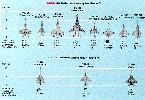 Air Defense: Soviet
air defenses are the most massive in the world. They include an
extensive variety of aircraft and missile weapon systems with mutually
supporting capabilities. Heaviest concentrations are in the European
USSR and the military/industrial areas east of the Urals. Qualitatively
improved weapon systems are being developed and will continue to be
introduced into the force.
Air Defense: Soviet
air defenses are the most massive in the world. They include an
extensive variety of aircraft and missile weapon systems with mutually
supporting capabilities. Heaviest concentrations are in the European
USSR and the military/industrial areas east of the Urals. Qualitatively
improved weapon systems are being developed and will continue to be
introduced into the force.
The Soviet air defense system should not be confused with those employed by client states using some Soviet equipment. No Soviet client state has been provided with anything comparable to the highly integrated Soviet air defense system. Examples of the failure of air defenses in those states when faced with attacks by first line aircraft should not be used to judge Soviet air defense capabilities.
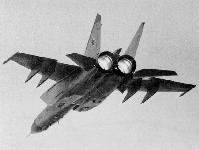 Aircraft:
Evolutionary changes continue in the interceptor force. Approximately
600 modern, strategic air defense interceptors with at least some
ability to engage low-altitude targets now make up half of the force.
The Soviets have been converting FOXBAT A aircraft, originally designed
to counter high-altitude threats, to FOXBAT E, giving them limited
low-altitude capabilities somewhat comparable to FLOGGER. The Soviets
have begun deployment of the FOXHOUND A, their first interceptor with a
true look-down/shoot-down capability. Two more look-down/shoot-down
fighters are currently in development and should enter service soon. As
these three types of aircraft replace or augment older types, the
Soviet capability to defend against low-altitude aircraft, including
cruise missiles, will increase.
Aircraft:
Evolutionary changes continue in the interceptor force. Approximately
600 modern, strategic air defense interceptors with at least some
ability to engage low-altitude targets now make up half of the force.
The Soviets have been converting FOXBAT A aircraft, originally designed
to counter high-altitude threats, to FOXBAT E, giving them limited
low-altitude capabilities somewhat comparable to FLOGGER. The Soviets
have begun deployment of the FOXHOUND A, their first interceptor with a
true look-down/shoot-down capability. Two more look-down/shoot-down
fighters are currently in development and should enter service soon. As
these three types of aircraft replace or augment older types, the
Soviet capability to defend against low-altitude aircraft, including
cruise missiles, will increase.
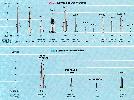 SAMs: As
in the interceptor force, improvements in the Soviet surface-to-air
missile(SAM) force are continuing. Again, the primary emphasis appears
to be a counter to low-altitude targets. Newer systems demonstrate
longer range, particularly at low altitude; improved mobility;
increased target handling capability and increased firepower.
Deployment of the SA-10 system, which can engage multiple aircraft and
possibly cruise missiles at any altitude, has steadily increased. In
addition to deployment around the USSR, the system is replacing the
30-year-old SA-1s around Moscow. Development of a mobile SA- 10 is
underway.
SAMs: As
in the interceptor force, improvements in the Soviet surface-to-air
missile(SAM) force are continuing. Again, the primary emphasis appears
to be a counter to low-altitude targets. Newer systems demonstrate
longer range, particularly at low altitude; improved mobility;
increased target handling capability and increased firepower.
Deployment of the SA-10 system, which can engage multiple aircraft and
possibly cruise missiles at any altitude, has steadily increased. In
addition to deployment around the USSR, the system is replacing the
30-year-old SA-1s around Moscow. Development of a mobile SA- 10 is
underway.
Passive Defense: The Soviet Ministry of Defense controls the nationwide civil defense programs of the USSR. The Chief of Civil Defense is a Deputy Minister of Defense and general of the army. Full-time civil defense staffs exist at each echelon of the Soviet administrative structure. Civil defense staffs also exist at significant industrial, utility and other installations. In wartime, the civil defense administrative structure, assimilated into an integrated command system, would play a significant role in maintenance of the government and the economy. This goal is supported by the protection provided leadership through deep, hard, urban sheltering and an extensive network of hardened relocation sites outside the cities, with redundant communications systems. The program also provides for continuity of support for the economy in wartime through the protection of the essential workforce by sheltering at work and by the dispersal of off-shift workers to areas away from work sites. Although much urban shelter space is available for the use of general urban populations, their protection is to be achieved primarily through mass evacuation of cities. In peacetime, more than 150,000 people work full-time in the civil defense program. In wartime, the numbers could swell to 16 million. The program costs the equivalent of $3 billion annually.
US Defense Forces: The United States deploys fewer than 120 ground and AWACS air defense radars, no SAMs for defense of North America and less than 300 interceptors (most 1950s vintage). Moreover, the US has had no ballistic missile defense (BMD) capability since 1976, when the single SAFEGUARD site was closed. The US currently has almost no civil defense capability.


